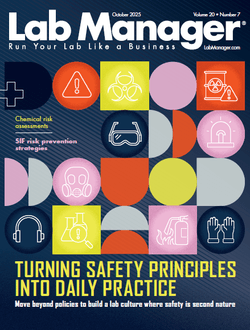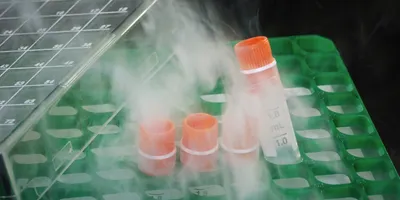Like every year post Pittcon there has been lots of media attention paid to this year’s prestigious Pittcon Editors Choice award winners. But, as these three instruments represent the cutting edge of lab equipment development, I would like to step back and look at what insight into future trends in lab innovation might be gleaned from these instruments.
 Trend #1 – Integration. Everyone loves their iPhone. How could you not? It’s your music player and your cell phone perfectly integrated. Analytical chemists also love their hyphenated chromatography - LC/MS, GC/MS. So why not keep integrating and see what new analytical systems can be created? OI Analytical and Piccaro did just that and won Silver at Pittcon 2009 by introducing a TOC analyzer that has been integrated with a carbon isotope analyzer called the iCarbonizer 3000…Well, actually, that’s what I would have named it. OI named it the iTOC-CRDS.
Trend #1 – Integration. Everyone loves their iPhone. How could you not? It’s your music player and your cell phone perfectly integrated. Analytical chemists also love their hyphenated chromatography - LC/MS, GC/MS. So why not keep integrating and see what new analytical systems can be created? OI Analytical and Piccaro did just that and won Silver at Pittcon 2009 by introducing a TOC analyzer that has been integrated with a carbon isotope analyzer called the iCarbonizer 3000…Well, actually, that’s what I would have named it. OI named it the iTOC-CRDS.
 Trend#2 – Field use. While the term “field use” can get some researchers excited, I guess it really depends on where your field is. For some the field is the pharmaceutical production floor. For others it’s a mine in Sudbury. This new field use XRD/XRF system, designed specifically for rock and mineral analysis from InXitu, was originally built for much more intriguing field use…the planet Mars. Ten years from the time Terra starting working with NASA on developing the “Terra” portable XRD/XRF, they have won Pittcon Gold. In the past five years we have seen many portable devices launched at Pittcon, but it appears the trend toward field use instruments is just beginning as manufacturers find new ways, as with the Terra, to dramatically reduce or eliminate sample preparation required to quickly perform analysis in the field. Go to their web site and watch the video to see just how simple it is. There is no more eloquent way to describe it other than: Put the rock in the sample holder, lock it in, and hit the analyze button. Don’t leave for the mine, forensics scene, homeland security situation or Mars without one.
Trend#2 – Field use. While the term “field use” can get some researchers excited, I guess it really depends on where your field is. For some the field is the pharmaceutical production floor. For others it’s a mine in Sudbury. This new field use XRD/XRF system, designed specifically for rock and mineral analysis from InXitu, was originally built for much more intriguing field use…the planet Mars. Ten years from the time Terra starting working with NASA on developing the “Terra” portable XRD/XRF, they have won Pittcon Gold. In the past five years we have seen many portable devices launched at Pittcon, but it appears the trend toward field use instruments is just beginning as manufacturers find new ways, as with the Terra, to dramatically reduce or eliminate sample preparation required to quickly perform analysis in the field. Go to their web site and watch the video to see just how simple it is. There is no more eloquent way to describe it other than: Put the rock in the sample holder, lock it in, and hit the analyze button. Don’t leave for the mine, forensics scene, homeland security situation or Mars without one.
 Trend#3 – Sub-Nano race. It seems that this year’s Pittcon Bronze award winner, the Shimadzu IG-1000, has sparked new energy in the race to accurately measure sub-nano particles. By introducing new induced-grating technology, which uses dielectrophoresis and diffracted light to analyze particles, the IG-1000 is able to reliably measure sub 10nm particles. Just 12 days after Pittcon wrapped up, Malvern released successful results of measuring sub-nano particles with their Dynamic Light Scattering technology, which Shimadzu hopes to displace with the induced grating (IG) technology. This will be an interesting trend to watch and very beneficial for researchers who require more accurate and stable data on the sub-nano level.
Trend#3 – Sub-Nano race. It seems that this year’s Pittcon Bronze award winner, the Shimadzu IG-1000, has sparked new energy in the race to accurately measure sub-nano particles. By introducing new induced-grating technology, which uses dielectrophoresis and diffracted light to analyze particles, the IG-1000 is able to reliably measure sub 10nm particles. Just 12 days after Pittcon wrapped up, Malvern released successful results of measuring sub-nano particles with their Dynamic Light Scattering technology, which Shimadzu hopes to displace with the induced grating (IG) technology. This will be an interesting trend to watch and very beneficial for researchers who require more accurate and stable data on the sub-nano level.
Like every year post Pittcon there has been lots of media attention paid to this year’s prestigious Pittcon Editors Choice award winners. But, as these three instruments represent the cutting edge of lab equipment development, I would like to step back and look at what insight into future trends in lab innovation might be gleaned from these instruments.
To continue reading this article, sign up for FREE to

Membership is FREE and provides you with instant access to eNewsletters, digital publications, article archives, and more.



 Trend #1 – Integration. Everyone loves their iPhone. How could you not? It’s your music player and your cell phone perfectly integrated. Analytical chemists also love their hyphenated chromatography - LC/MS, GC/MS. So why not keep integrating and see what new analytical systems can be created? OI Analytical and Piccaro did just that and won Silver at Pittcon 2009 by introducing a TOC analyzer that has been integrated with a carbon isotope analyzer called the iCarbonizer 3000…Well, actually, that’s what I would have named it. OI named it the
Trend #1 – Integration. Everyone loves their iPhone. How could you not? It’s your music player and your cell phone perfectly integrated. Analytical chemists also love their hyphenated chromatography - LC/MS, GC/MS. So why not keep integrating and see what new analytical systems can be created? OI Analytical and Piccaro did just that and won Silver at Pittcon 2009 by introducing a TOC analyzer that has been integrated with a carbon isotope analyzer called the iCarbonizer 3000…Well, actually, that’s what I would have named it. OI named it the  Trend#2 – Field use. While the term “field use” can get some researchers excited, I guess it really depends on where your field is. For some the field is the pharmaceutical production floor. For others it’s a mine in Sudbury. This new
Trend#2 – Field use. While the term “field use” can get some researchers excited, I guess it really depends on where your field is. For some the field is the pharmaceutical production floor. For others it’s a mine in Sudbury. This new  Trend#3 – Sub-Nano race. It seems that this year’s Pittcon Bronze award winner, the
Trend#3 – Sub-Nano race. It seems that this year’s Pittcon Bronze award winner, the 






